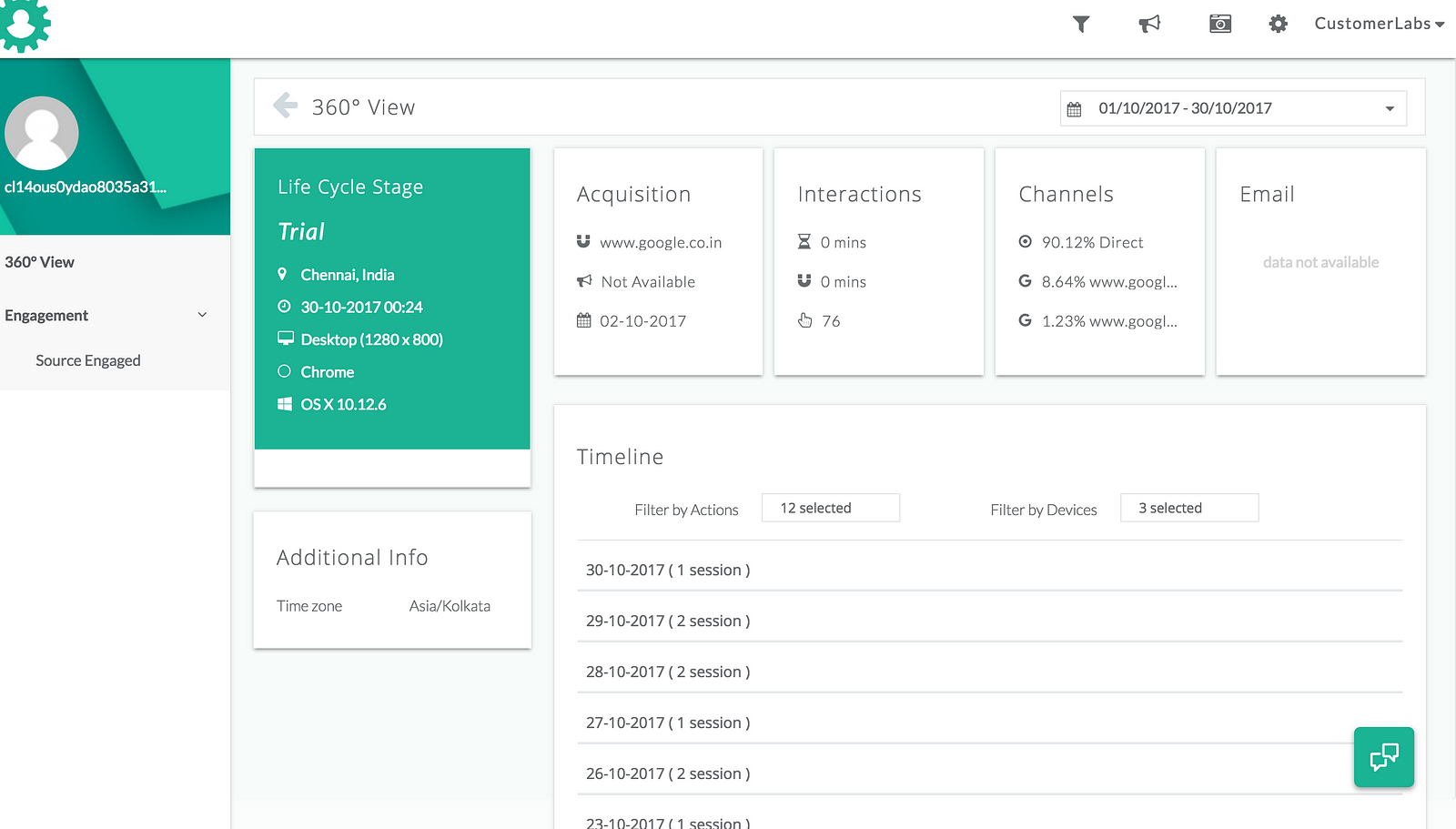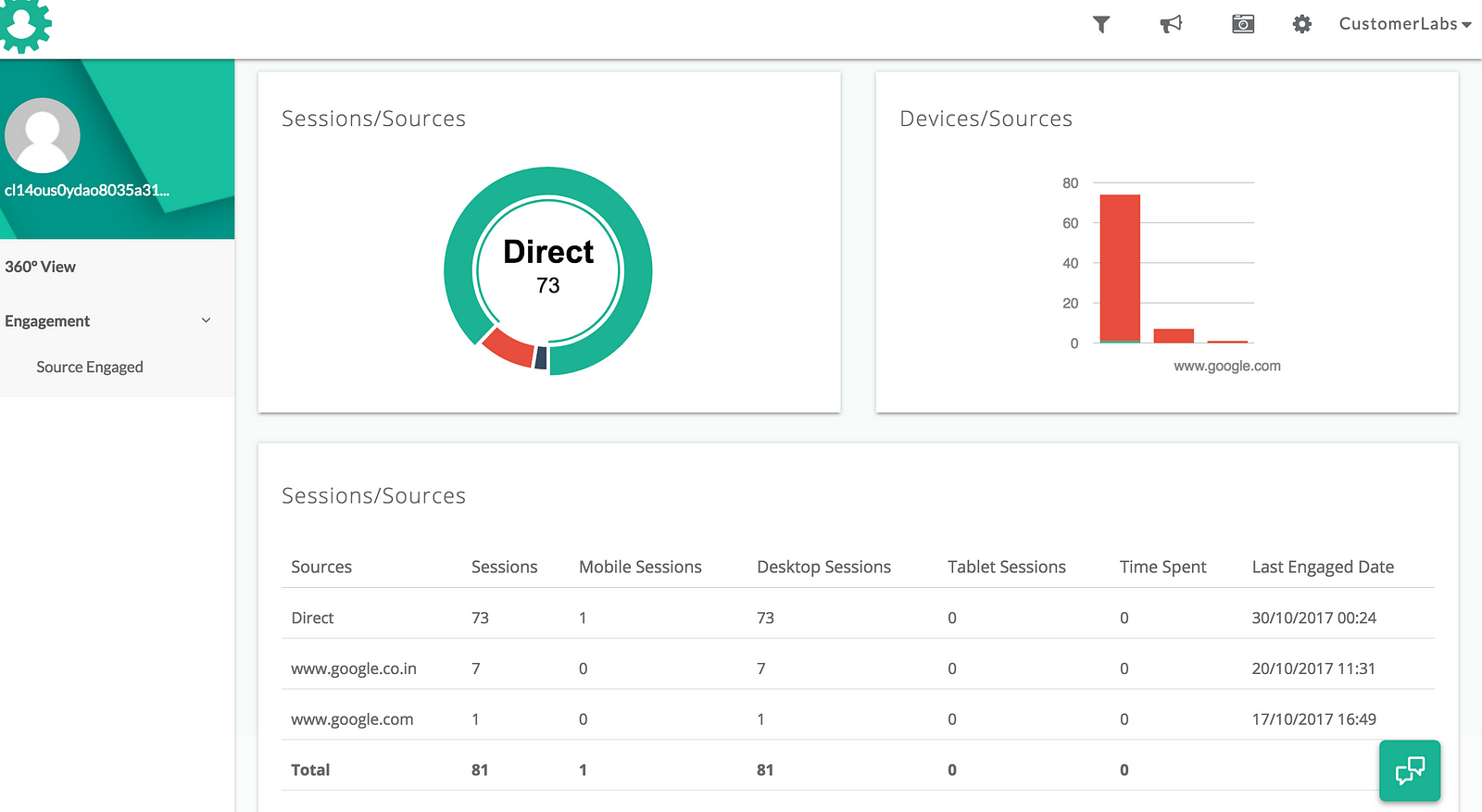Precisely 10 years ago, SEO, SEM, Blogs, Emails were the biggest channels in the digital marketing industry and digital marketing roles have seen a lot of transition from Email Marketer, SEM specialist, Blogger, SEO analyst to Content writer, Growth hackers, Marketing data analysts, Conversion optimizers, Customer Lifecycle manager.
Digital Marketing has become complicated with a variety of tools forming different layers like SEM, Email Marketing, Content Marketing, Retargeting, Onboarding, Customer Success, CRM, Heatmaps, Lead Scoring, Data Enrichment, Website Analytics, Customer Analytics, and Product Analytics.
With layered applications, it is quite challenging for digital marketers to understand customers. The data collected by respective applications sit in silos and in their own formats.
When a digital marketer would like to form a 360 view of a customer to understand his lifecycle journey i.e. (pages visited, products purchased, support requests raised, products viewed, campaigns engaged, email opens, demographics, platform data, customer segments) and it’s practically impossible.
Over the time the digital marketing team will become scattered and slowly lose control over what their teammates are doing. To form an alignment and bring the teams together there’s a new role which manages marketing operations.
Organisations are still figuring out what’s the exact role of marketing operations. But, I think marketing ops should be focused on bringing the alignment inside the marketing department and other departments as well. For eg: Marketing, Sales, IT, and Support to start of with.
Marketing ops should be reporting to CMO / VP of marketing who can feed the data to derive a strategy and alliances to manage the entire customer lifecycle.
Marketing ops focus on technology which can assist them in Customer engagement and automation, Analytics, Dashboards.
In my opinion, marketing ops should aim to bring everyone together in the form of data. Eg: Inside the digital marketing team, they should focus on bringing the SEM, Email, Social Media, Webpage conversion data together to frame a picture of the customer. Once that’s done, they should move into sales and support team and bring sync the data about the customer to improve the customer experience since acquisition to retirement.
Bringing the data together into a single schema is a daunting task if you are maintaining data warehouse.
Wikipedia summarises it well.
A data lake is a method of storing data within a system or repository, in its natural format, that facilitates the collocation of data in various schemata and structural forms, usually, object blobs or files.
The idea of data lake is to have a single store of all data in the enterprise ranging from raw data (which implies exact copy of source system data) to transform data which is used for various tasks including reporting, visualization, analytics and machine learning.
The data lake includes structured data from relational databases (rows and columns), semi-structured data (CSV, logs, XML, JSON), unstructured data (emails, documents, PDFs) and even binary data (images, audio, video) thus creating a centralized data store accommodating all forms of data.
You can bring the data from various apps into one data lake, for eg:
Outbound email: Bounces, Unsubscribes, Opens, Complaints, Click Rates
Adwords: Ads, Placements, Keywords, and the entire value track parameters.
Organic: Referrers, Content, channels and of course other UTM params.
Website: Pageviews, Events, purchases, product clicks, user registrations, added to carts, and everything else.
Product Information: Product name, price, quantity, variants, sizes, colors.
Support: Support requests, tickets.
Segmentation: Segmentation data from other sources like enrichment software.
Sales: CRM data from salesforce, customer buckets, lifecycle stages.
I’m sure you’ll get the picture. You can send the data in any blob format you’d like for eg, our platform action recorder sends the data in the below format:
When a user clicked on the product, we collect various data about the user as well as about the product. Our tool Action Recorder (a point and click tool to track customer data and sync it with 3rd party tools including data lake without writing a single line of code ) is used to collect the following event data.

“[
{
“v_typ”: “New”,
“browser”: “Mozilla/5.0 (iPhone; CPU iPhone OS 10_2_1 like Mac OS X) AppleWebKit/602.4.6 (KHTML, like Gecko) Mobile/14D27 [FBAN/FBIOS;FBAV/82.0.0.42.69;FBBV/51077300;FBRV/0;FBDV/iPhone7,2;FBMD/iPhone;FBSN/iOS;FBSV/10.2.1;FBSS/2;FBCR/AirTel;FBID/phone;FBLC/en_US;FBOP/5]”,
“platform”: “iOS”,
“browser_language”: “en-us”,
“screen_size”: “375 x 667”,
“server_env”: “app”,
“country”: “India”,
“city”: “Thane”,
“state”: null,
“postal_code”: “400601”,
“continent”: “Asia”,
“isp”: “Airtel Broadband”,
“user_id”: “cl1568r46zibra2577c69–25dc-4fe4–9963-e0d0f0016db6”,
“client_id”: “cl1568r46zibr”,
“session_id”: “CL-39705aff-718f-4e3f-93e2”,
“source”: “fb”,
“source_type”: “Unknown”,
“page_title”: “Best Price”,
“page_link”: “http://www.ioiouoioioi.com/search/q=eyJjdXJyZW50X2NpdHlfaWQiOjIsInNlYXJjaF90ZXh0IjoiS1RNIER1a2UgMjAwIiwicGFnZSI6MX0=“,
“action”: “Product clicked”,
“action_type”: “click”,
“device”: “Mobile”,
“ip_address”: “171.50.239.140”,
“cl_triggered_ts”: “2017–03–08 07:40:35 UTC”,
“location”: “19.2 , 72.9667”,
“timezone”: “Asia/Kolkata”,
“traits”: [],
“cl_utm_params”: [
{
“key”: “utm_source”,
“value”: “fb”
},
{
“key”: “utm_medium”,
“value”: “HP_CTA”
},
{
“key”: “utm_campaign”,
“value”: “Book_Now”
}
],
“cl_other_params”: [],
“attributes”: [
{
“key”: “city”,
“value”: “Bangalore”,
“type”: “string”
}
],
“products”: [
{
“traits”: [
{
“key”: “Product Price”,
“value”: “78990”,
“type”: “currency”
},
{
“key”: “Product Name”,
“value”: “Duke 200”,
“type”: “string”
},
{
“key”: “Product Brand”,
“value”: “KTM”,
“type”: “string”
}
]
}
],
“processing_time”: “2017–03–08T07:40:35.372Z”
}
]”
The above example is a schema from our data lake which holds various parameters for a particular event called product clicked. The data is in JSON format in our case and can be transformed into any way we want when we consume the data.
360 View of a customer:

360 degree view of a customer
Sources that particular customer engaged with for attribution

When you have entire data about your customer the applications or use cases are unlimited however to give you an idea these are a few crazy things you could do.
a) Attribution by Session / Event level to understand which channel is helping you get more conversions.
b) Powerful segmentation
c) Segment users and work on heatmap analysis (Checkout the heatmap analysis of segments which are not converting)
d) Sales cycle optimisation — that is when to start nurturing and when to stop, how to pace it everything backed by the data.
e) Full control to marketing department over the customer journey.
Like I said there are various things we could pull about an individual customer or group of customers.
I’d like to argue pretty much every business who owns a website and use different apps to acquire, retain and engage customers should start collecting data in marketing data lake for further analysis.
Over the next two years, we’ll see marketing data lake demand increases and most of the companies will have their own data lake to get serve their customers very well.
Start building your own data lake now.
Do share and recommend, if you find this article useful.
